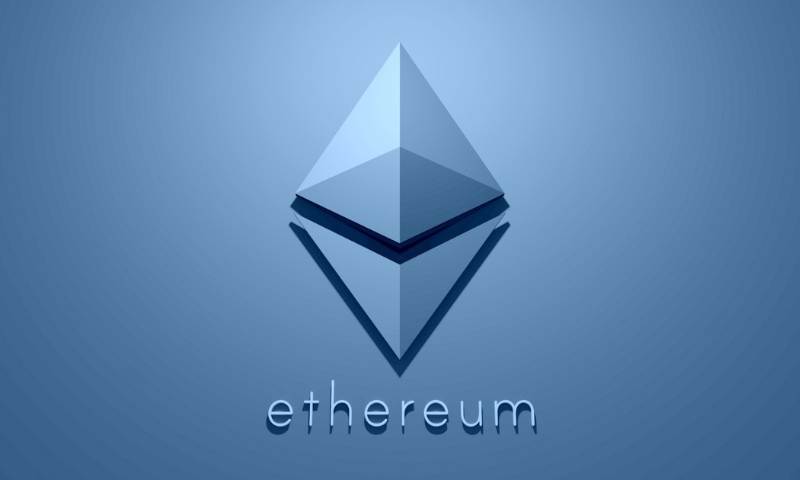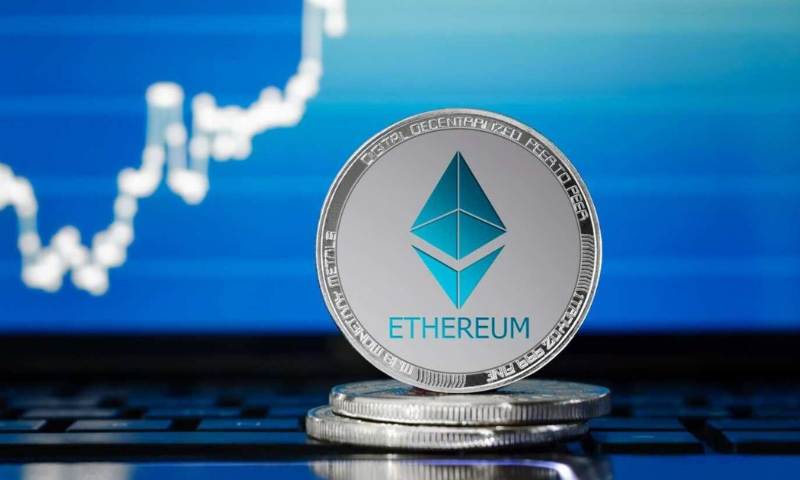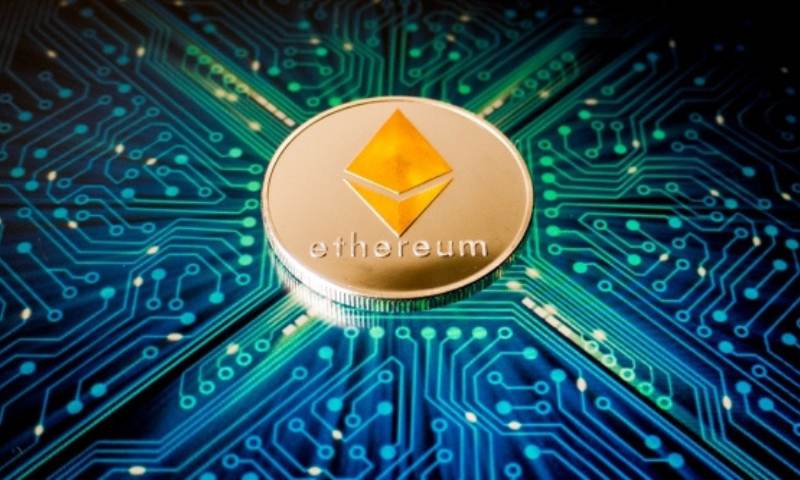The Launch of Ethereum blockchain wasn’t just an update; it flipped the world of crypto on its head. We dived from a single-currency focus to a vast universe where apps can live on the blockchain. Let’s unwrap this gift to the cyber world. With Ethereum, you get to wield tools beyond coins – smart contracts, DApps, you name it. We’re not talking simple tweaks here. This shift is what your favorite superhero movie is missing for a plot twist. So buckle up, as we break down this game-changing leap for digital ledger glory!
The Genesis of Ethereum and Its Founding Vision
The Ethereum Platform Introduction
Ethereum began as a fresh idea to change the world of tech. In 2015, when it launched, it aimed to do more than just track money. It was here to let people craft rules, called smart contracts, for dealing with money. These rules are key for creating a wide range of tools and games right on the blockchain.
The Role of Vitalik Buterin in Blockchain Evolution
Vitalik Buterin, a young thinker and writer, spotted blockchain’s limits early on. He didn’t just want to move money. He dreamed of a blockchain that did much more. His goal? A platform where anyone could whip up their own operations, not just send and receive cash. So, he got to work and helped to launch a new kind of blockchain. This one wasn’t just about money – it was a whole ecosystem where developers could play and build all kinds of apps.
Now, let’s dig deeper to know more about Ethereum and what’s going on under the hood.
Ethereum makes it easy for people to build dApps, which are like regular apps but run on a global network. It’s like a giant, shared computer that everyone can use, but no single person owns. With Ethereum, you can set up your own digital money or whip up a digital market.
The backbone of Ethereum lies in smart contracts. Imagine setting a snack machine to run itself. If you put money in, a snack comes out. That’s what a smart contract does – it runs the rules you set up, without needing a person to check every step.
But how does Ethereum make sure everyone plays fair? It uses a system called proof of work, which is like a race to solve super hard puzzles. The winners get to add a new block to the giant list of transactions. But this can use a lot of electricity, which made people look for better ways. That’s where proof of stake comes in. It’s like putting in a deposit to play the game. If you try to cheat, you lose your money, so it’s safer and uses less power.
Also, we’ve got this thing called the Ethereum Virtual Machine. Think of it as the engine that runs all the apps on Ethereum. Whenever you do something, like sending some digital money, your action turns into a special kind of mathematics that the EVM can understand and double-check.
However, it’s not always smooth sailing. Every action you take costs a bit of money, which we call “gas fees”. Yep, just like you need fuel for your car, you need a bit of Ether to do stuff on Ethereum. This can sometimes get pricey, but the smart folks at Ethereum are always working on new ideas to cut these costs and make everything snappy and cheap.
From smart contracts to new ways of managing gas fees and the advent of Ethereum 2.0, the platform is always getting better. It’s all about creating a world where anyone can build their ideas on a shared network, without any boss in charge. And guess what? This is just the start of our crypto adventure!
Understanding The Core Components of Ethereum
Ethereum Blockchain Basics and Architecture
Ethereum kicked off in 2015. It was the brainchild of Vitalik Buterin. He saw blockchain could do more than Bitcoin’s ledger work. His vision was to create a platform where anyone could build programs. This would all live on a global, blockchain-powered computer. That’s the Ethereum we know today.
So, what is the Ethereum blockchain? It’s a tech that lets people work together without a middleman. Think of it as a big machine that everyone can use, but no single person owns. Each part of the computer is on a different user’s computer. This setup is the Ethereum network architecture. It’s the backbone that lets users manage stuff with Ethereum’s digital coin, Ether.
The Mechanics of Smart Contracts and Decentralized Applications
Now, what are smart contracts? They’re like usual contracts but run as programs on Ethereum. This means they work exactly as written, without someone in the middle. You can trust them to always do what they say they will. People worldwide use smart contracts for stuff like voting, games, and finance.
Decentralized apps, or dApps, build on smart contracts. They are applications that run on a network of computers. They are not kept on any one machine or owned by a single company. And they run on Ethereum. You’ve maybe heard of some popular dApps like Uniswap. They let folks trade digital tokens without needing a big exchange in charge.
Smart contracts and dApps are big deals. They’re changing how we think about using the internet. Before, if you wanted to build an app, you had to get space on a server owned by a company. Now, with Ethereum, you can put your app on a network that’s free for anyone to use, and it’s also tough to take down or control.
This vision of a new internet is what pulls people to Ethereum. It’s exciting to see what developers will make next. The Ethereum blockchain keeps getting updates to handle more users. There’s also a big switch coming up, where the whole network will use far less power. This shift from mining using proof of work to trusting in proof of stake is called Ethereum 2.0.
All of this builds on the smart, original plan of using blockchain for more than just money. Ethereum’s creators wanted a place where anyone could make and run safe, honest programs. That dream is alive and growing. It’s a space that keeps on giving to its users and builders. Each update makes the network faster and safer for everyone.
Those are the basics. The Ethereum platform goes deep, though. Smart contracts and dApps are just the start. There are also digital cats to collect and artwork to buy that you can’t touch, but they’re worth a lot! But those stories are for another time. For now, just know Ethereum is a world of its own, full of opportunity and buzzing with activity.
Ethereum’s Path to Decentralization and Scalability
The Transition from Proof of Work to Proof of Stake
Ethereum’s big change kicked off not long ago. This shift is like the platform is starting a brand new chapter. It moved from proof of work (PoW) to proof of stake (PoS). Now, let’s break this down.
What is proof of work?
It is how new digital coins are made and all transactions are agreed upon. Basically, it involves folks using a lot of computer power to solve complex math puzzles.
Why did Ethereum make the switch?
PoW takes up a ton of energy, more than some whole countries use. That’s massive! Ethereum’s switch to PoS is a huge step for saving energy. Plus, it can handle lots more transactions, making it super fast.
How does proof of stake work?
With PoS, the process is way different. People lock up some of their Ether as a security deposit. These folks, called validators, are then picked to confirm transactions and create new coins. If they try to pull something sneaky, their deposit can be taken. It’s a clever way to keep everyone honest.
This switch aims to make Ethereum more scalable and secure. We can think of it as a crowded highway getting more lanes. The road gets safer, and cars can zoom past much quicker. That’s the kind of upgrade we’re talking about. It’s a promising step for those using this crypto highway.
Ethereum Virtual Machine and Gas Fee Dynamics
Next up is the Ethereum Virtual Machine, or EVM for short. It’s like the brain of Ethereum. Every smart contract runs on the EVM. When folks talk about gas fees, they mean the payment to use Ethereum’s power. Gas fees change a lot because they depend on supply and demand. It’s like when more people want to play a game, the more it might cost.
What are gas fees?
They cover the cost of doing actions on Ethereum. Like when you send Ether to a friend or use a dApp. The gas fee is a small payment sent to those who make sure the transaction is legit.
Why do gas fees matter?
High fees can make smaller transactions pointless. Like when sending a few dollars isn’t smart if the fee itself is a few dollars. But Ethereum’s updates, especially moving to PoS, aim to cut these fees down.
Cutting down fees is key for everyone using Ethereum. It helps more people jump in and make things like dApps. Lower fees mean a smoother ride on Ethereum roads for everyone. This is what I call paving the road to the future, making things smooth and easy.
So, that’s where Ethereum is headed. It’s all about making things faster, cheaper, and safer to use. As a big fan of crypto, I’m pumped to see where this highway leads us. It’s like we’re all together on a super-fast train to the future. And the next stops? They look bright, full of promise, and ready to rock the world of crypto.
Ethereum’s Growth Ecosystem and Future Outlook
The Emergence of Decentralized Finance (DeFi) on Ethereum
Decentralized Finance, or DeFi, is now big on Ethereum. Before, banks controlled money. Now, with DeFi, people are in charge. On Ethereum, smart contracts handle money tasks without middlemen. DeFi lets you lend, borrow, or trade assets. It’s like a huge LEGO set for finance!
When did DeFi start? DeFi began around 2018. Back then, only a few knew about it. Now, it has billions locked in its smart contracts. This growth shows that people want to control their money. They can earn interest or take loans, anywhere, anytime. DeFi on Ethereum is like an open bank in your computer.
It also brings new jobs and skills. You can be a DeFi developer or an advisor. Or, you can just be a user earning from it. It’s not just for pros. Anyone with a phone can use DeFi to make their money work for them.
NFTs and Their Impact on the Ethereum Blockchain
Did you hear about NFTs? They’re all the rage! NFT stands for Non-Fungible Token, which means it’s one of a kind. Imagine a rare baseball card but digital and on Ethereum’s blockchain. NFTs can be art, music, or even tweets.
When did NFTs start getting big? Around 2017, CryptoKitties made them famous. Then in 2021, they exploded. Big sales grabbed headlines. Some NFTs sell for millions!
Why are they important on Ethereum? NFTs show Ethereum is more than money. It’s a new space for artists and creators. It’s a place to own unique digital items. This pushes the Ethereum network to grow and adapt. It also makes the world see Ethereum as an art stage, not just a coin.
NFTs are not only about art. They could change how we own things over the internet. Think of tickets, legal papers, or game items. NFTs can handle all these. They could make online ownership clear and fair.
Ethereum’s DeFi and NFTs shape our future. They open doors for us to rethink our money and art over the web. But remember, this world is still new. We need to learn and stay careful with our digital wallets.
So, what will the future bring? More updates to Ethereum, like Ethereum 2.0, will help DeFi and NFTs grow. Lower gas fees and faster deals are coming. This is big for everyone. It means a better, quicker, and cleaner Ethereum.
As an expert, I can’t wait to see what’s next. From new DeFi apps to amazing digital artists, it’s going to be a wild ride. Get ready to be a part of it and watch the Ethereum ecosystem blossom!
In this post, we dived into Ethereum’s birth and big goals. We started by looking at how and why Ethereum came to be. Vitalik Buterin was key in taking blockchain to new heights. We then explored Ethereum’s main parts, like its special blockchain and smart tech that helps apps work on their own. We also saw how Ethereum changed its core tech to let more people use it at once and make it more secure. Lastly, we talked about how Ethereum is growing fast with new finance tricks and digital collectibles changing the game. Ethereum’s journey is big for all of us interested in tech and money. I’m excited to see where it will go next and how it will keep making our world smarter and more open.
Q&A :
Certainly! Below are the FAQ questions for the keyword “Launch of Ethereum blockchain”:
What is the Ethereum blockchain and how was it launched?
Ethereum blockchain is a decentralized platform that enables smart contracts and distributed applications (dApps) to be built and run without any downtime, fraud, control, or interference from a third party. The launch of Ethereum took place on July 30, 2015, when the first block of the Ethereum network, called the Genesis block, was created. This event marked the official beginning of the Ethereum platform, proposed and developed by Vitalik Buterin and the Ethereum Foundation.
How does the Ethereum blockchain differ from Bitcoin?
The Ethereum blockchain, while inspired by Bitcoin, presents various technological enhancements. It operates not only as a platform to facilitate peer-to-peer monetary transactions but also allows for the creation and execution of complex contracts and programs through its own scripting language, Solidity. This functionality enables a broader scope of possibilities including decentralized applications and autonomous organizations, which are not natively possible on Bitcoin’s blockchain.
What were the major milestones following the launch of the Ethereum blockchain?
Following its launch, the Ethereum blockchain has undergone several developmental milestones, known as “hard forks,” which serve to upgrade and improve the system. Notable milestones include the Homestead update in 2016, which provided improved security and the groundwork for future updates; the DAO hard fork in the same year, addressing the repercussions of the DAO attack; and the Constantinople and Istanbul updates that introduced various optimizations in 2019. One of the most anticipated milestones is the transition to Ethereum 2.0, which aims to improve scalability and security by shifting to a proof-of-stake consensus mechanism.
What is Ethereum 2.0, and why is it significant in the context of the Ethereum blockchain launch?
Ethereum 2.0, also known as “Serenity,” is an upgrade to the Ethereum blockchain that aims to improve scalability, security, and sustainability. This transition is significant because it marks Ethereum’s shift from a proof-of-work (PoW) to a proof-of-stake (PoS) consensus mechanism, which will significantly reduce energy consumption and allow the network to process more transactions per second. The launch of Ethereum 2.0 is being implemented in phases, beginning with the Beacon Chain in 2020, and it is seen as an essential evolution of the platform since its initial launch in 2015.
How can developers and investors get involved with the Ethereum blockchain?
Developers interested in the Ethereum blockchain are encouraged to learn the platform’s native programming language, Solidity, to develop smart contracts and dApps. They can participate in various developer communities, contribute to open-source projects, and attend Ethereum-related events. Investors may get involved by purchasing Ether, the native cryptocurrency of the Ethereum network, or by investing in Ethereum-based projects and startups. Keeping abreast of the latest updates and developments is crucial for both developers and investors who wish to actively engage with the Ethereum ecosystem.


